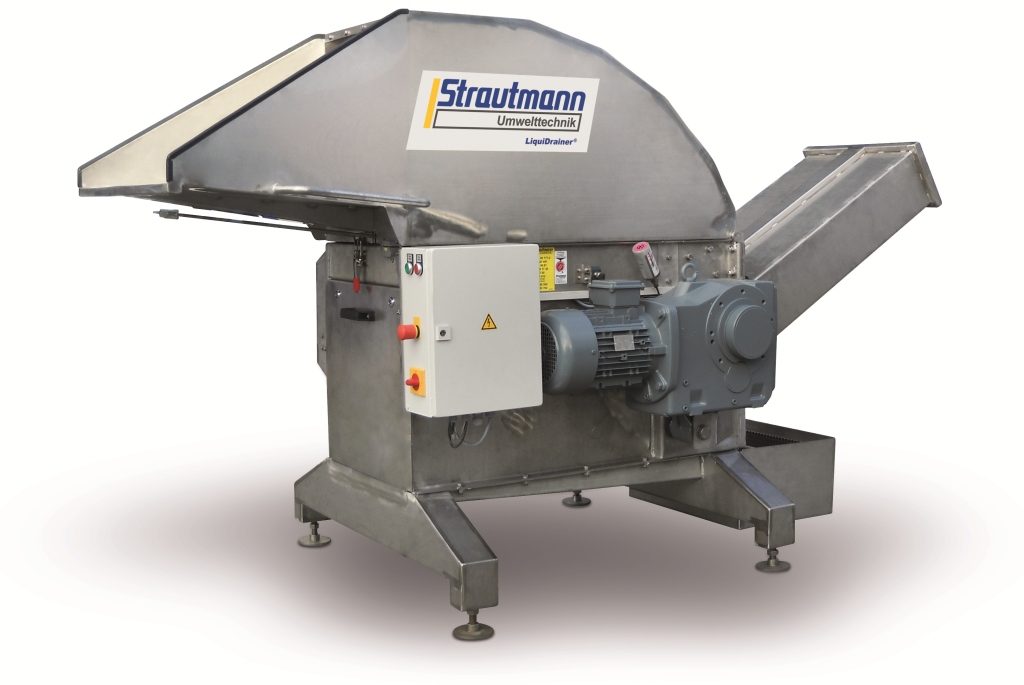Waste Disposal Solutions Revealed in Nuremberg
23rd November 2018

German waste disposal expert Strautmann Umwelttechnik presented its waste disposal solutions at the BrauBeviale in Nuremberg last week. The company is particularly known for its emptying and compaction of PET, beverage cans and TetraPak®. It says with its LiquiDrainer, bale- and briquette presses you successfully dispose of waste with little effort and maximum effect.
1. LiquiDrainer: Insertion of full beverage containers
Manually, by conveyor belt or forklift, up to 10,000 1L beverage bottles can be inserted and emptied within 1 hour. A feed rocker feeds the material to the rotor. The rotor pricks into the beverage container so that liquid can escape.
2. LiquiDrainer: Devalue
Due to the special rotor technique beverage containers are not only emptied but also devalued. Thus residuals are destroyed and can’t get into circulation. The liquids are drained in a targetted way and go through a coarse filter. The liquids can also be sold to biogas plants. .
Strautmann says the benefit of the LiquiDrainer is that cost-intensive manual opening of PET bottles is not necessary anymore. This work is now done by the LiquiDrainer automatically and without any manpower. Disposal remains in-house and prevents faulty batches getting into circulation. Extra revenue is available by selling the liquid to biogas plants.
3. BrikPress: Compaction of empty containers
PET containers from the LiquiDrainer can be compacted with a BrikPress. Through conveyor belts or a fork lift the press can be inserted 24/7. With a throughput of 50,000 bottles in 1 hour the material is compacted with 380kN. The result: high compacted briquettes.
With a BrikPress, via conveyors or lift trucks, the press can be filled around the clock. With a throughput of up to 50,000 bottles per hour, the material inside the press chamber is compressed with a pressing force of 380kN. The highly compacted briquettes are then pushed out through the channel systems automatically and can be stored in containers.

